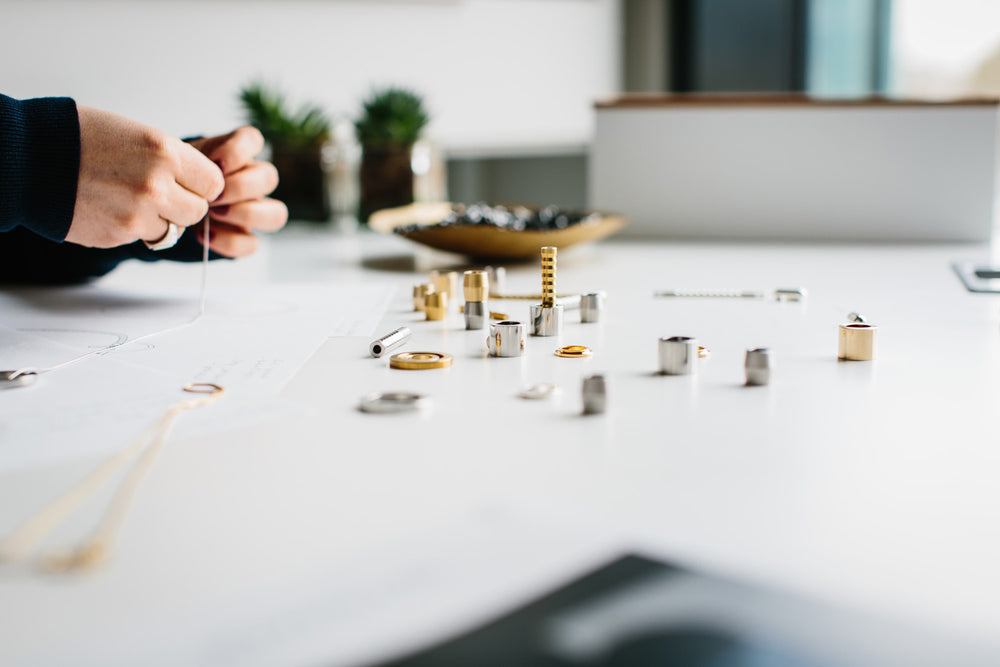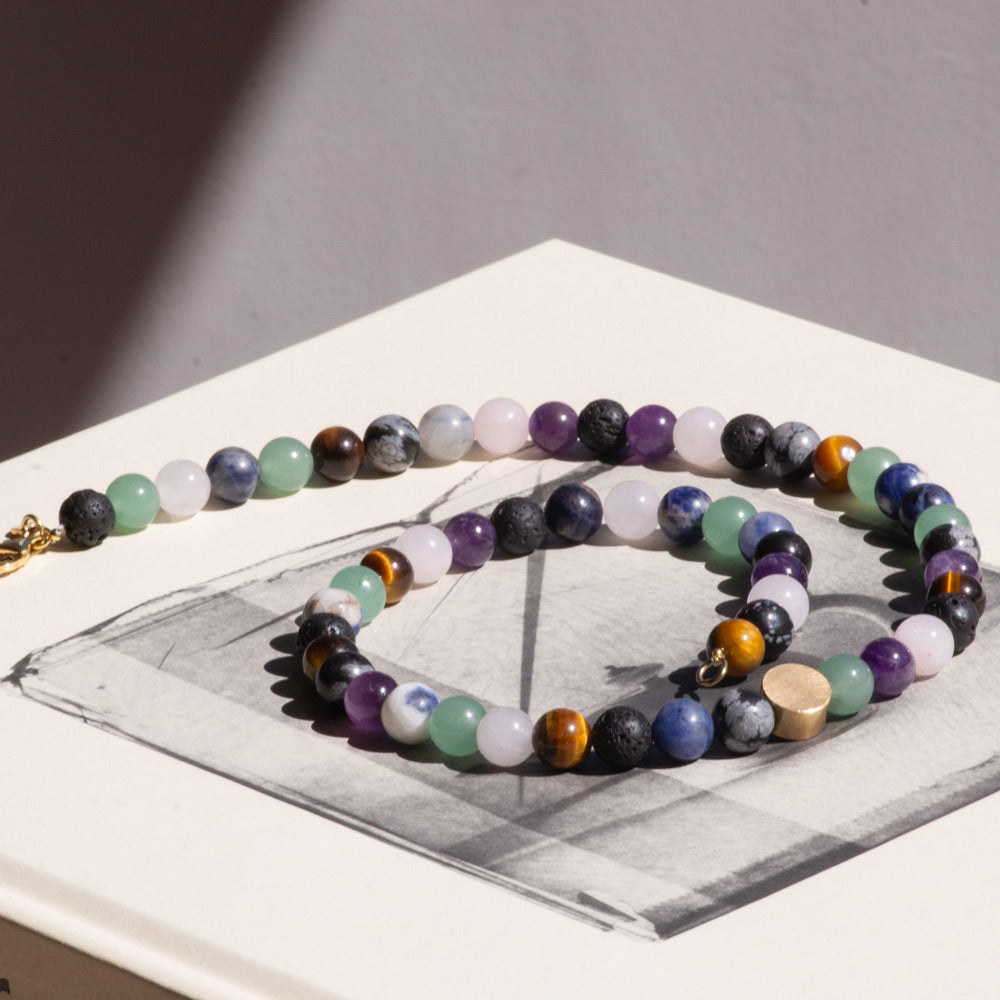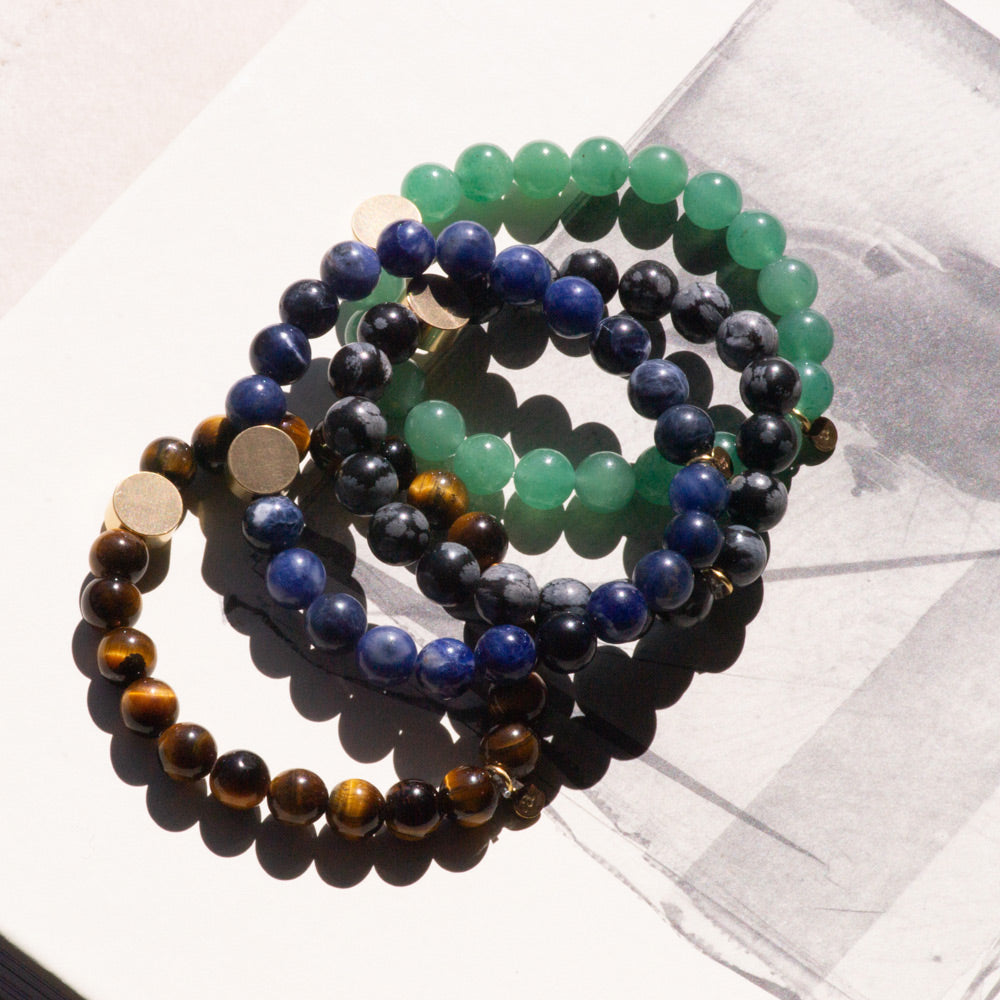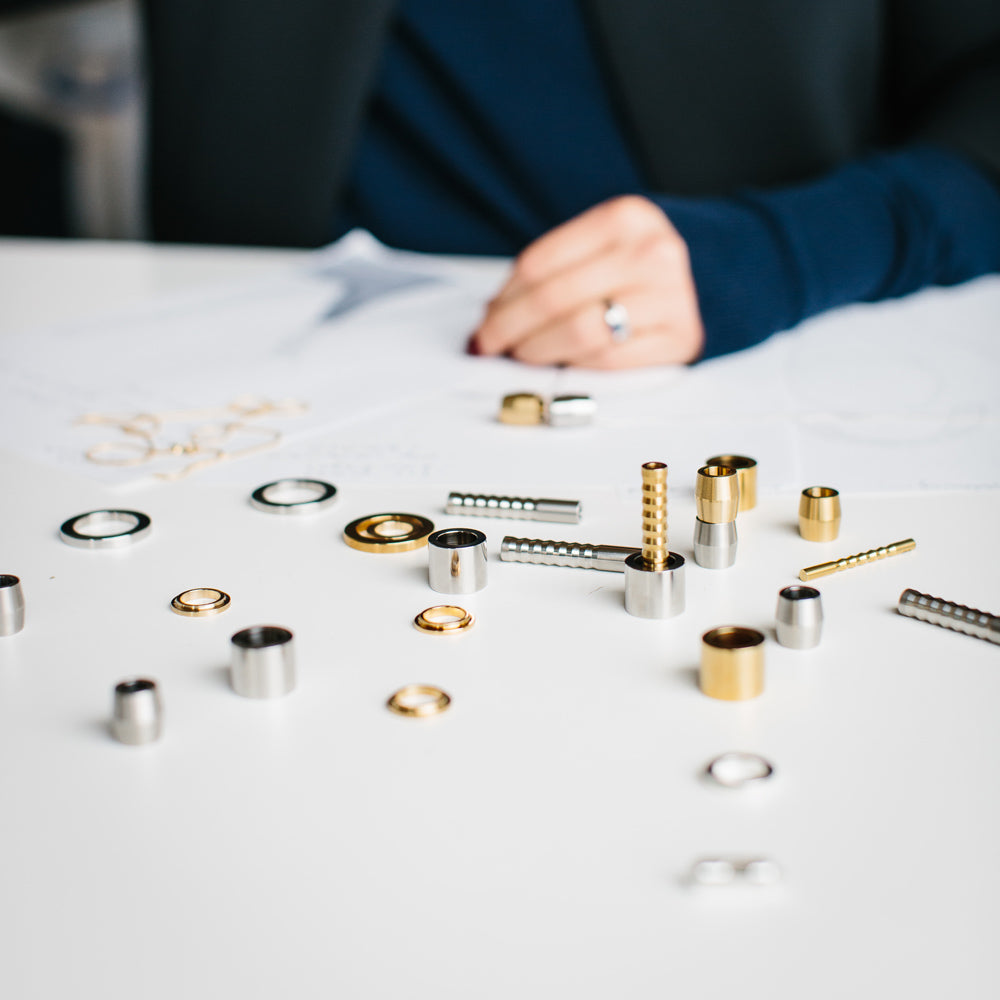Geometry and Precision in Nature
The new Geometry collection from Alice Made This is a clean and refined hardware collection sees us working with our Aerospace and Nanotechnology factories and is inspired by primary shapes, geometric forms, architectural silhouettes, and the graphic line.
The belts, bracelets, cufflinks, lapel pins and key rings use machined and polished finishes, in signature metals, together with soft leather tones to offer a considered and precise aesthetic.
Three approaches inform the new Geometry collection:
POLISHED AND ARCHITECTURAL.
Buckles are precision milled and turned from solid blocks of copper, brass and steel into a geometric silhouette. Once cut, the hardware is barreled, cleaned, filed and hand finished to achieve a high polish.
MACHINED AND PRIMARY.
Rings are precision turned from solid blocks of copper, brass and steel into primary forms. The rings have a clean, machined finish.
CLEAN AND GRAPHIC.
Graphic profiles are precision turned from solid bars of copper, brass and steel. Once cut, handcrafted techniques include, filing, annealing, forming and polishing. The pieces are developed into a series of cufflinks, pins and cuff bracelets offering design details such as reversible shapes, profile plays and medicinal material values.
Precision in Nature
The Alice Made This aesthetic is all about precision. Our Geometry collection of cufflinks, pins, belts, bracelets and key rings is inspired by primary shapes and graphic forms, looking at the precise maths within shapes. Such precision is also prevalent within nature, particularly the curious Golden Ratio, which occurs naturally in all manner of plants, animals, and natural phenomena. This ‘perfect’ ratio reflects both the Alice Made This focus on a precise and refined pieces, and the geometrical influences behind the latest collection.
The beginnings of the Golden Ratio were in Ancient Greece, as mathematicians noticed its frequent occurrence in geometry, particularly in pentagons and pentagrams. The Golden Ratio is the case of a line being divided into a larger segment and a smaller segment, where the ratio between the larger length (a) and the full length (c) is the same as that of the ratio between the smaller length (b) and the larger length; this only occurs when
c = a x 1.61803398875…
and a = b x 1.61803398875…
Since the 20th century, 1.61803398875 has become known as Phi, after the Greek sculptor Phidias, who is alleged to have used the Golden Ratio in the Parthenon.
The Golden Ratio is inextricably linked to the famous Fibonacci sequence, where a number equals the sum of the preceding numbers – 0, 1, 1, 2, 3, 5, 8, 13 etc. If you take the Fibonacci sequence and divide each number by the number before it, it gets closer and closer to Phi, until they eventually meet at infinity.
There are many occurrences of the Fibonacci sequence and the Golden Ratio in nature, from the number of petals in a flower to the spiral of a galaxy. Sunflower seeds, pinecones and pineapples also all feature the Golden Ratio, as well as the inside of fruits such as bananas and apples. The Golden Ratio also occurs in animals and humans – from penguins, where the eyes, beak, wing and key body markings all fall at golden sections of its height, to the human face.
This extraordinary pattern shows how there is order throughout the natural world, and precision can be found in the most unexpected of places.
We work with British manufacturers. Find out more in our shop















